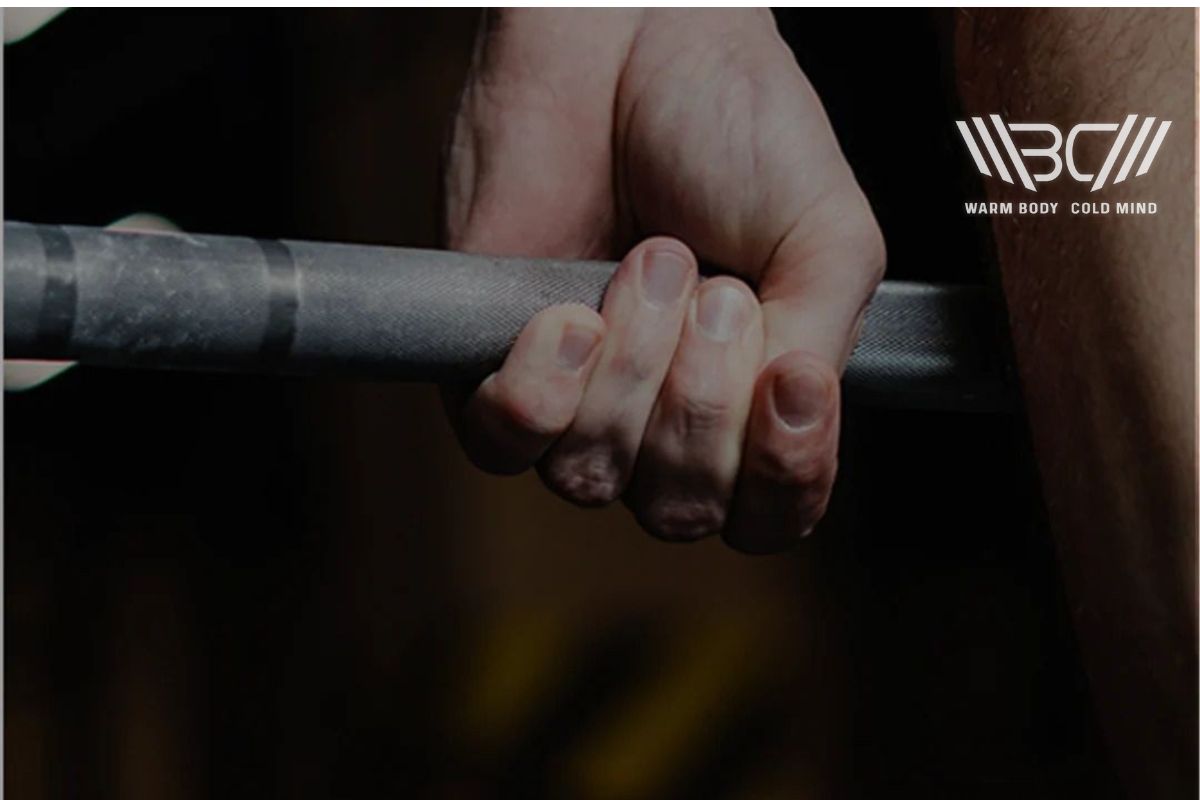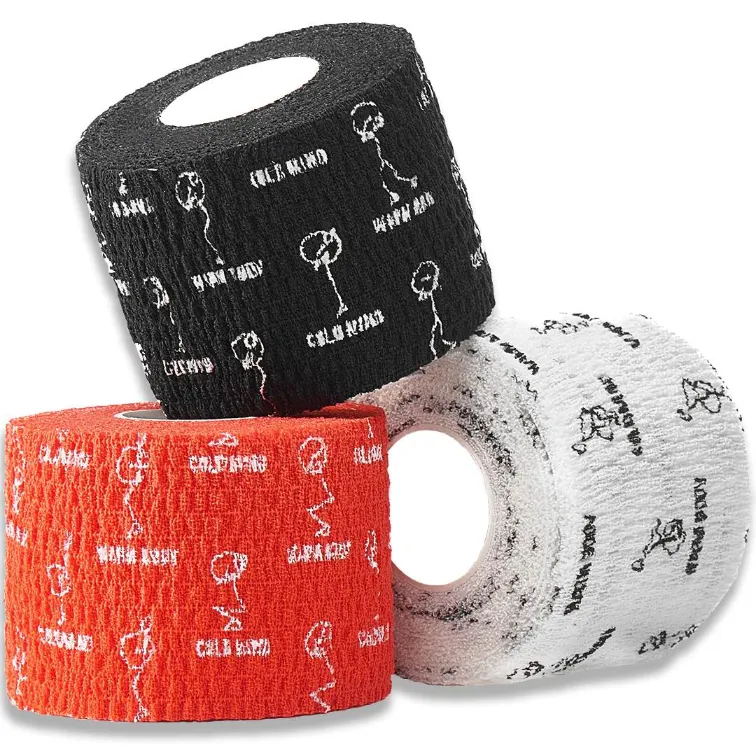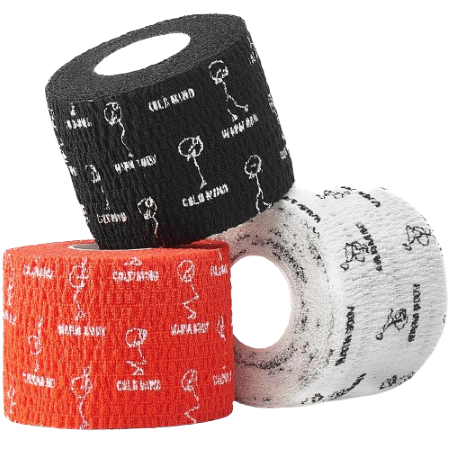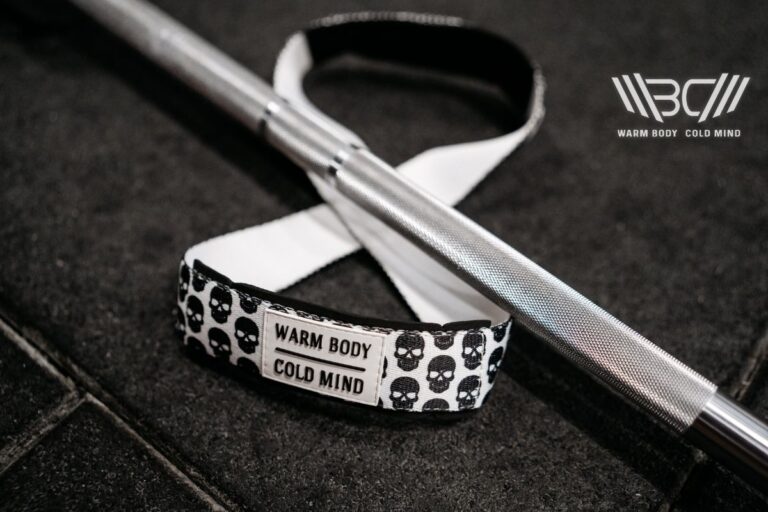Master the Deadlift Hook Grip in 6 Steps
Strength training is no joke, and the deadlift is considered to be the pinnacle of power. If you can master it – congratulations, you don’t have that much left to conquer. There are a lot of different techniques to master the deadlift, and one of them is the deadlift hook grip.
Let’s put all the cards on the table and call it like it is – it looks uncomfortable and maybe even scary. If you’ve ever seen it, there’s a good chance you turned your head away from it and decided not to give it a try. It’s good to know your limits, but the problem with that attitude is that you never learn the benefits a certain technique has.
Before you completely decide against it, take a few moments to learn about hook grip. So, what is a deadlift hook grip? What can a hook grip do for you, and are there shortcuts to performing it safely and (relatively) effortlessly?
What Is the Deadlift Hook Grip? – The deadlift hook grip is a weightlifting technique where you wrap your fingers around the barbell while your thumb stays under your fingers.
What Is Hook Grip?
This is a weightlifting technique that’s used mostly in deadlifts, cleans and snatches. It’s pretty much a special way of holding the barbell or bar to improve grip strength and reduce the chance of slipping.

You do it by gripping the barbell with your fingers, but your thumb stays under your fingers. With the traditional grip, the thumb stays on top of the fingers so hook grip may seem like a bad decision initially – but this technique has a lot of benefits and it’s popular for a reason.
Is Hook Grip Good for Deadlift?
There are many techniques apart from hook grip that are very popular and have their benefits. But when it comes to deadlifting in particular, the hook grip is your best option.
The traditional overhand grip is most likely what you first think of when you think of lifting. But hook grip is far better for deadlifting than the overhand grip because the overhand is more prone to slippage.
There’s also the mixed grip, and this technique is better than the overhand, but still not as good as hook grip. Yes, they share some benefits, but mixed grip can create muscle imbalances between the arms and the shoulders. This means that with hook grip, you can actually prevent potential injuries.
5 Benefits of Using Hook Grip
Using the hook grip is not just a way to lift a barbell or for show. Instead, it brings a number of benefits to the table when doing deadlift:
✅ Barbell Security
If you’ve ever tried to do a deadlift, you’ll be very familiar with how it challenges your grip strength (especially as you increase the weight). The hook grip will allow you to hold the bar better because it will reduce the chance of slipping. Since your thumb is safely locked under your fingers, the barbell has a lot less possibility of moving or shifting during the lift.

Maximize your lifts with Warm Body Cold Mind lifting tape, designed for the perfect hook grip.
✅ Increased Confidence
Less chance of slipping can also be a big confidence boost, and this can help you lift heavier weights. Think about it – when you don’t have to worry about the barbell slipping, the only thing you need to focus on is your technique.
✅ Less Chalk Required
If you use chalk, you’ll notice you won’t be using it as much with hook grip because you simply don’t need it. Sure, chalk can help your grip, but the way your fingers are placed in hook grip will naturally improve your strength and you’ll use a lot less chalk than you normally would.

✅ Less Stress on the Muscles
Another great thing with hook grip is that your biceps and forearms won’t be under as much stress as they are with mixed or overhand grip. Both of these can really strain your muscles because of the imbalanced twisting forces. This won’t happen with the hook grip, though, because it will evenly distribute the weight across both of your arms and shoulders and lower the amount of strain.
✅ Even Weight Distribution
The even weight distribution happens because, during the hook grip, the lifter will wrap the thumbs around the bar and secure them with the fingers. And this configuration allows for a more symmetrical grip than what you get in a mixed or overhand grip. And because of the symmetry, the weight that’s being lifted is uniformly shared between the arms and shoulders on both sides.
Subscribe!
The latest reviews of must-have home gym training equipment, apparel, and supplements that will enhance your performance and bring you new results.
Who Will Benefit From Hook Grip the Most?
There are a lot more people who will benefit from the hook grip for deadlifts than you may think.
Powerlifters and Olympic weightlifters are, of course, among them. Since this technique will improve their grip strength, they’ll be able to focus more on their form instead of on the bar slipping.
But they’re not the only ones. If you’re an intermediate to advanced weightlifter, you may have hit that phase where you’re starting to lift weights that really challenge the strength of your grip. Hook grip can help you bridge the gap between increasing the weight and still having a secure hold on the bar.
Also, did you know joints love the hook grip? This is because the weight is distributed evenly and symmetrically across your arms and shoulders.

How to Use Hook Grip for Deadlift in 6 Simple Steps?
1. Prepped Hands
Always start with freshly washed, thoroughly dried hands. If you’re using chalk, which is completely fine, use the minimal amount and ensure even distribution. Not a lot of chalk is needed since the hook grip technique naturally improves grip strength.
2. Place Your Thumbs
Place your thumbs under the barbell and wrap your fingers over your thumbs. Your thumbs should be sandwiched between your fingers and the bar.
3. Secure the Bar
When you grip the bar, wrap your fingers tightly around the thumbs – this is what’s going to create the “hook”.
4. Hand Placement
Your hands should be shoulder-width apart, but you can adjust this according to what feels comfortable.
5. Thumb Contact
Keep a consistent pressure between your thumbs and the bar throughout the lift. This is important to prevent slipping.
6. Engage the Core
Before you start lifting, engage your core so that your spine aligns properly. This is a strong foundation for your deadlift.
Is Hook Grip Safe?
Is hook grip safe? The short answer is – yes if you do it correctly. It can, however, come with some side effects.

The most obvious one is thumb discomfort, and this is completely normal when you first start out. You’ll need to get used to the pressure, and once you do, the soreness will ease.
If you’re not maintaining the correct form, however, you can end up injuring your thumb. The tendons can become inflamed if your grip is too tight.
Skin abrasions and blisters are quite common for weightlifters because there’s friction between your skin and the bar. If you’re not using any hand protection, it’s likely the hook grip will cause them.
Technique is absolutely the best way to prevent injury, and it starts with lighter weights while you’re getting used to the changes. You’ll also need to incorporate rest days, they’re important because your body will need to recover from the workout. Don’t skip them, no matter how anxious you are to progress.
And don’t forget about the thumb tape! It serves as a protective layer between the bar and the skin, so you feel a lot less friction, which means fewer blisters and skin tears in the future!
We Recommend – Warm Body Cold Mind 2” Premium Lifting Thumb Tape for Weightlifting
To make your life easier and to spare you reading dozens of reviews, there’s a great tape you should consider using for hook grip – the WBCM Premium Lifting Tape.
You get three rolls per pack. The rolls are 19 feet long and 2 inches in width which is good value for the price.
The material used is cotton. And regardless of that, it’s easy to tear a piece away, and it leaves no frays behind. The hold is flexible, but secure. The glue is strong enough to prevent any shifting (unless you’re in a humid environment), but it also leaves absolutely no residue. Shifting is a pain and not only because it’s uncomfortable. If your tape shifts, you’ll spend a lot of time readjusting; time that would be better spent lifting.

The cotton it’s made of makes it breathable, and it’s also great at sweat absorption. You really shouldn’t have any chalk on your hands, but if you happen to have some, it will absorb that too.
You don’t have to worry about allergies because this tape is non-allergenic, so if you have sensitive skin, this one is safe to use.
Pros
- Non-allergenic
- Very stretchy
- Absorbs sweat and chalk
- Easy to tear away
Cons
- Shifts in humid conditions
FAQ
How Much Does Hook Grip Add to Deadlift?
The impact can be significant because this technique gives you a more secure hold on the bar. Some people have reported improvements of 10% to 20% in their deadlift weight.
Is Hook Grip Allowed in Powerlifting?
Yes, it is. It’s legal and widely used in competitions. It has a lot of benefits and allows you to improve your performance while staying within the regulations.
Does Hook Grip Hurt?
When you first start, you’ll probably notice some discomfort or mild pain in your thumb because of the pressure. This is completely normal. But as you practice and as you get used to it, the discomfort will diminish.
Conclusion
The hook grip is a game-changer when it comes to deadlifts and if you’re deciding whether to give it a shot or not – I highly recommend you at least try it.
Don’t forget your thumb tape; it’s really useful and will help with a lot of the discomfort.
Well, that’s it from me, now I want to hear what you have to say! Did you know how to use hook grip for deadlift before today or is this news to you? Do you use thumb tape and how has it helped you? What results have you noticed from hook grip?
Leave your thoughts, questions and anything you can think of in the comments!
References:
- Rijen Shrestha, Kewal Krishan, Husnain Ishaq, Tanuj Kanchan, “StatPearls,” National Library of Medicine, https://www.ncbi.nlm.nih.gov/books/NBK554465/ (January, 2023).
- Marion B. Sulzberger MD, Thomas A. Cortese Jr MD, PhD, Leonard Fishman MD, Hugh S. Wiley MD, Paul S. Peyakovich AB, “Studies on Blisters Produced by Friction: I. Results of Linear Rubbing and Twisting Technics,” Journal of Investigative Dermatology, Volume 47, Issue 5, November 1966, Pages 456-465, https://www.sciencedirect.com/science/article/pii/S0022202X15472112 (January 6, 2016).
- Becks Shepherd, “Why are rest days important?,” Live Science, https://www.livescience.com/why-are-rest-days-important (August 10, 2022).
Author: Sergii Putsov
PhD in Sport Science, Olympic weightlifting, Strength & Conditioning coach and fitness expert
Sergii Putsov is a professional weightlifter with over 20 years of experience and multiple national medals. He was a member of the National weightlifting team, competing in the 94 kg weight class. Sergii holds a master’s degree in Olympic & Professional Sport Training and a Ph.D. in Sport Science. After his athletic career, Sergii transitioned into coaching and is now responsible for designing training programs, writing blog articles, providing live commentary for international weightlifting competitions, and hosting sport and fitness seminars worldwide.










